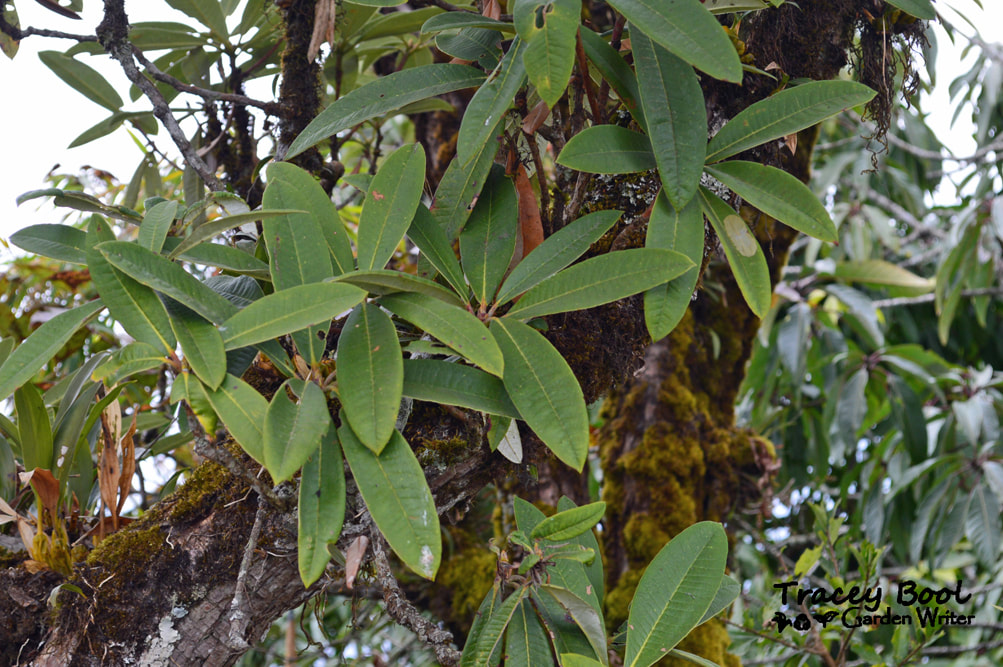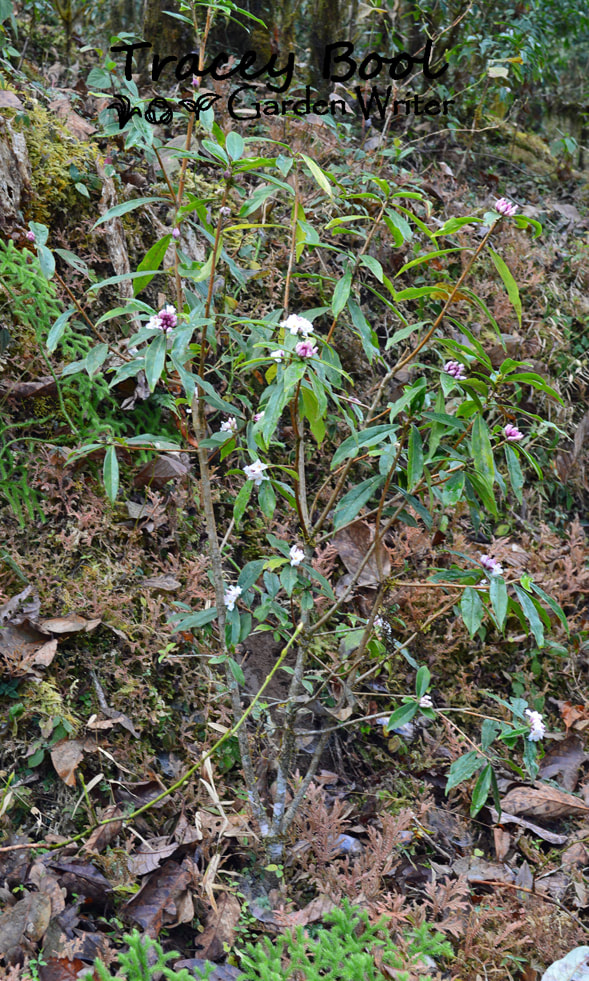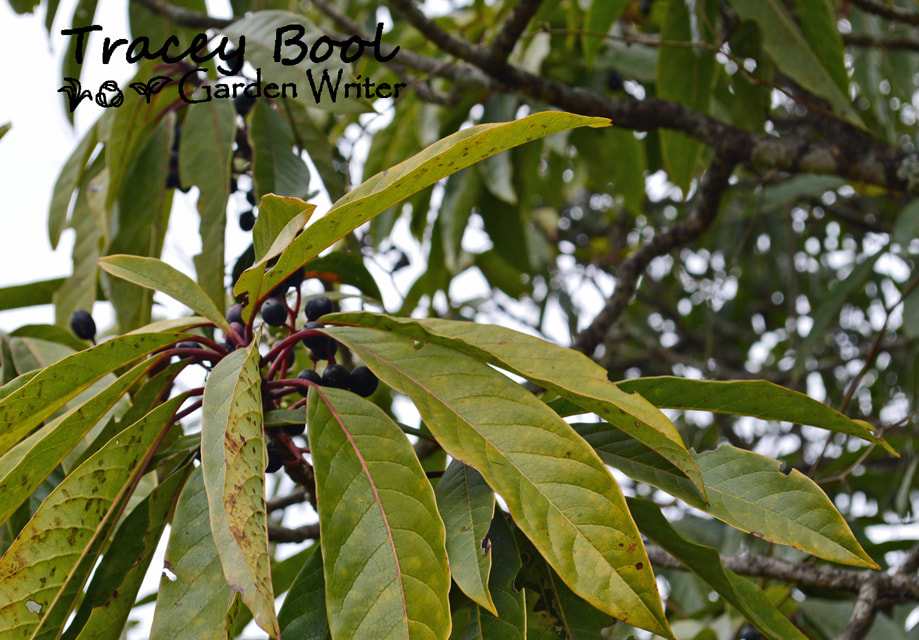|
Plants of Nepal
(22 February 2018) Nepal boasts a stunning landscape with an outstanding diversity of plant and animal life. The following are some of the interesting plants I came across when trekking in the Pokhara region: Rhododendron anthopogon, locally known as Sunpati, is a small evergreen shrub around 60cm to 2m with soft yellow flowers from May through to July (late spring and summer). R. anthopogon occurs in open alpine and lightly forested areas with altitudes of 3000m to 4000m below the snowline. Rhododendron anthopogon grows in well drained, acidic soils with deep layers of humus. It prefers reliable moisture but tolerates some drying out. These iconic plants also appear to cope with the moderate levels of dust and pollution apparent in the region, particularly during the winter dry season. Rhododendron anthopogon is a national symbol of Nepal, and is famous for its essential oil and medicinal properties. Interestingly, it is the only variety of this large genus which is non-toxic and whose aerial parts are steam distilled. Amongst its invaluable uses, leaves and flowers of Sunpati are utilised in Nepal to invigorate digestion and appetite, as well as for the treatment of common colds. It is also widely used as incense for its exceptional aroma. The essential oil can be used externally to treat arthritis, soothe sore muscles and invigorate the soul. Daphne bholua, commonly known as Nepalese Paper Plant, is a mostly evergreen shrub (semi-deciduous in higher altitudes), occurring in altitudes of 1500m to 3500m in forest margins and grassy areas. The shrub is sparse to moderately bushy in its natural environment and grows to around 2m and as high as 4m in its 5 to 10 year lifespan. During winter Daphne bholua is covered in distinctly perfumed white flowers with a pink tinge (many of you would be familiar with the related species, D. odora, a popular potted plant in cool temperate to sub-tropical climates in Australia). I was fortunate enough to see this beautiful plant in full flower when I was trekking in the Panchase Bhanjyang region. Daphne bholua grows in moderate to well-drained soils with some acidity. They tolerate periods of dryness in their natural environment but require reliable moisture in cultivation. In Nepal, Daphne bholua is commonly known as Baruwa and is used for traditional paper making. Fibre from the inner bark is also used to make rope. And although toxic if used incorrectly, D. bholua is used as a traditional medicine to treat fevers. Daphniphyllum himalayense, is a frost hardy large shrub or small tree to 6m. Its large shiny green leaves with red stems are not unlike Portuguese laurel in appearance (Prunus lusitanica). D. himalayense is dioecious, meaning each individual has either male or female reproductive organs. It grows in relatively high altitudes and tolerates a range of well drained soils including clays. Daphniphyllum himalayense has quality timber which is used in wood turning endeavours, and when dried and powdered, the wood is used as a dye. D. himalayense has potential in cultivation in climates such as ours and can be propagated readily by fertile seed. |
|



